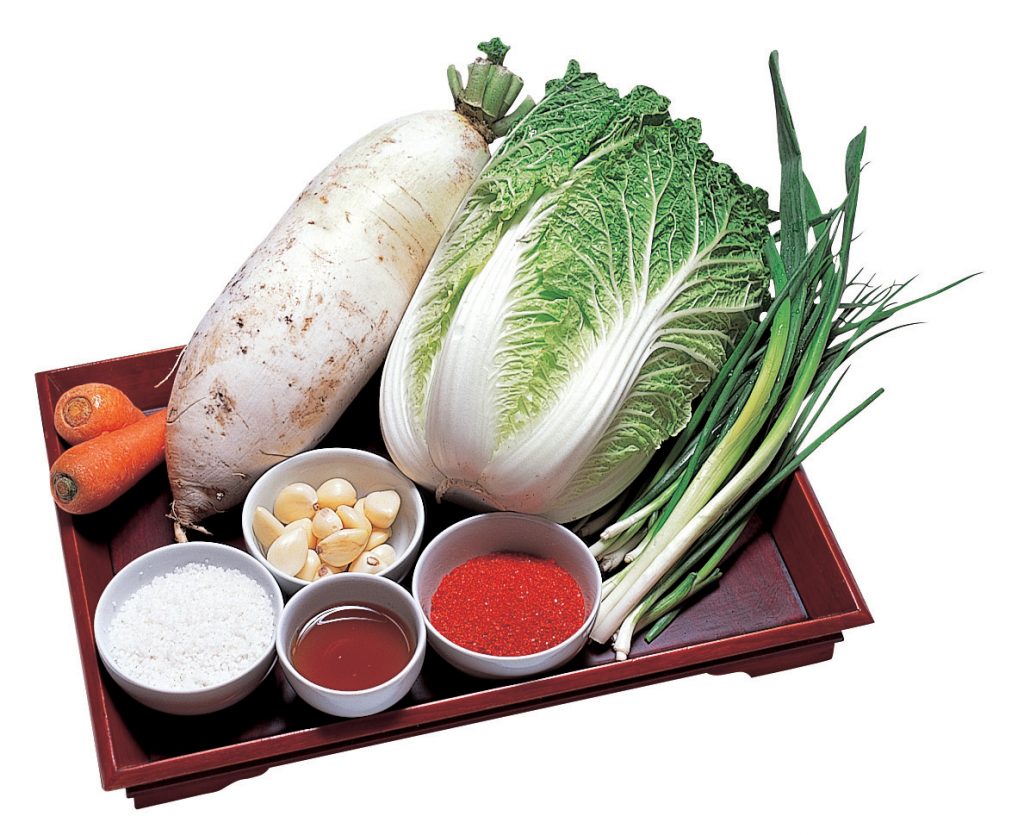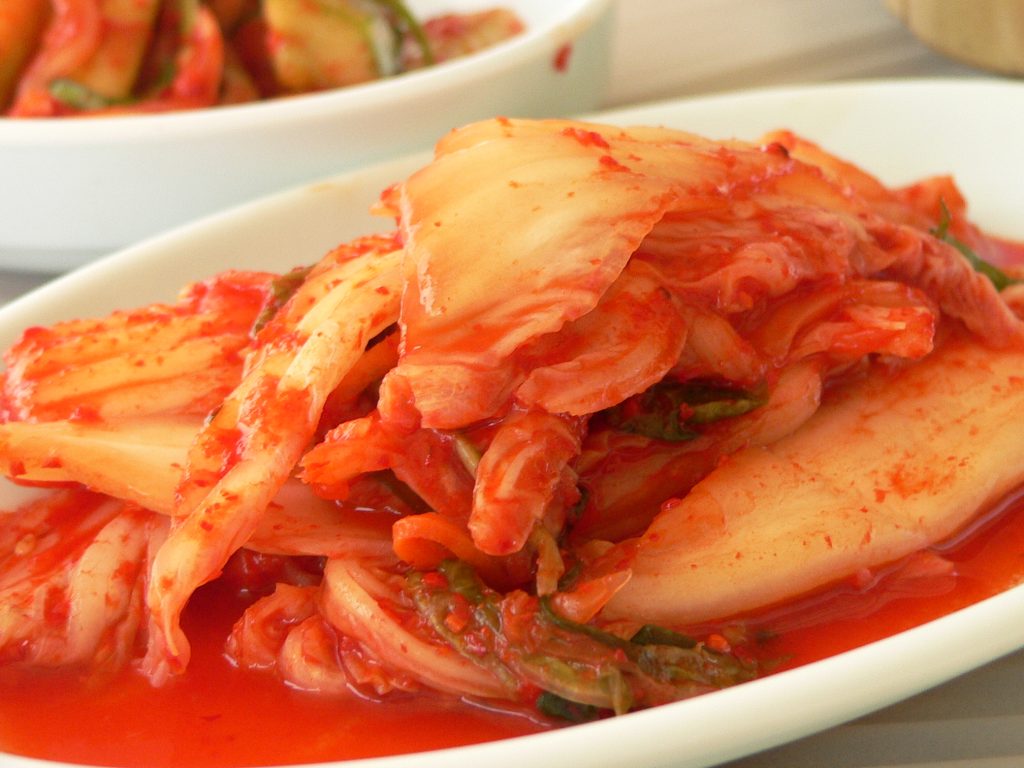Fans of Asian cuisine are surely already familiar with Kimchi, the emblematic dish of Korea.
For others, well, it’s time to find out!
It is actually a cabbage preparation lacto-fermented in brine, and usually spicy.
There are many types of Kimchi, but its most famous version is Chinese Cabbage Kimchi. Below are the basic ingredients for making kimchi:

Ingredients:
250ml water
125 ml of organic vinegar
250 g of organic vegetables
1 onion
½ red bell pepper
2 bunches of dill
½ tsp. c. mustard seeds
½ tsp. c. coriander seeds
1 C. c. cumin powder
1 C. c. turmeric
1½ tsp. at s. sugar (cane)
1½ tsp. at s. salt
How to make your own kimchi
Choose one vegetable or combine different vegetables such as Chinese cabbage, cauliflower, zucchini, cucumber, bell pepper, radish and carrot.
Sterilize glass jars and wash your hands thoroughly to avoid contamination with microorganisms. Wash the vegetables and cut them thinly, into strips or slices.
Arrange the vegetables and the dill bunches in the glass jars.
Heat the water with the sugar, salt and other spices, and let everything boil for a few minutes. Then pour the water into the glass jars. Leave to cool then screw on the lid.
Store your own kimchi in the fridge. Tip: You can eat your kimchi fairly quickly, but it will be tastier if you let it sit a bit longer.
And here (below), what it looks like when it’s ready to eat!
The advantages of (lacto) fermentation are numerous
1- No mess, you can use your leftover vegetables and your vegetable overproduction (if you are lucky enough to have your own vegetable garden) to stock up for the winter.
2- If you respect the rules of hygiene (prior sterilization of the jars, cleaning of the hands, etc.), the conservation is durable and safe.
3- The lactofermentation process will naturally generate probiotics favorable to your intestinal microbiota!
4- It’s delicious!
Not convinced? So try it out for yourself and let us know in the comments if you like it (or not) and how you go about it.





Leave a Reply